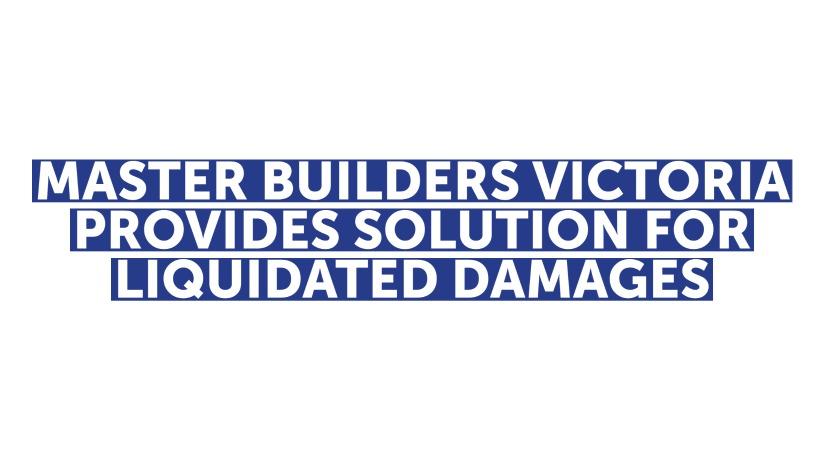Master Builders Victoria has today proposed a practical solution, the ‘COVID-19 Contract Framework’, for one of the biggest issues facing the building and construction industry in 2021 – liquidated damages.
With the obvious hurdles of a workforce that was sometimes shutdown by 75%, and the knock-on effect of sub-contractors and suppliers not able to work near full capacity in 2020 due to unforeseen circumstances, there have been understandable delays on many projects around Victoria. This was further exacerbated by the full five-day industry shutdown in February 2021.
The uncertainty that hangs over builders is how to treat the legal status of projects that were entered into contractually before 1 March, 2020, but have been delayed or are likely to be delayed due to COVID-19 restrictions.
Master Builders Victoria CEO Rebecca Casson believes they’ve devised a sensible approach.
“Due to the issues of 2020 and the more recent February lockdown its completely understandable that certain projects missed deadlines, but it does leave a legal minefield for everyone involved in the contracting chain about where liquidated damages might be apportioned,” said Ms. Casson.
“To ensure a fair and equitable outcome for all parties, Master Builders Victoria is proposing a ‘COVID-19 Contracting Framework’ as a guide for parties to explore all possible resolution options and encourage solutions with collective benefits for our industry.”
“Without this process we may see builders penalised through no fault of their own, which could be devastating for the future of their business, jobs and Victoria’s economic recovery.”
“We have submitted the proposal to the Victorian Government for consideration as a model for contracting and believe that our industry’s proactive measures and cooperation with the enforcement of vastly reduced worksites during 2020, and again in 2021, should be recognised by adopting these guidelines.”
Master Builders Victoria’s COVID-19 Contracting Framework can be accessed HERE.
The framework sets out a series of steps for parties to follow to reach outcomes that avoid adverse ramifications of delays or likely delays. This framework uses detailed case studies to give context to its practical application.
While COVIDSafe practices, such as physical distancing, affected productivity in the building and construction industry from March 2020 onwards, the enforcement of reduced capacity across all areas of the industry from August through to November saw up to 75% of workers being locked out of some worksites. This has caused a variety of deadlines and supply issues across the contracting chain.
Liquidated damages in this context refers to financial damages stated contractually for late performance.
ENDS
For further information please call Shannon Gill on 0409 985 428.






